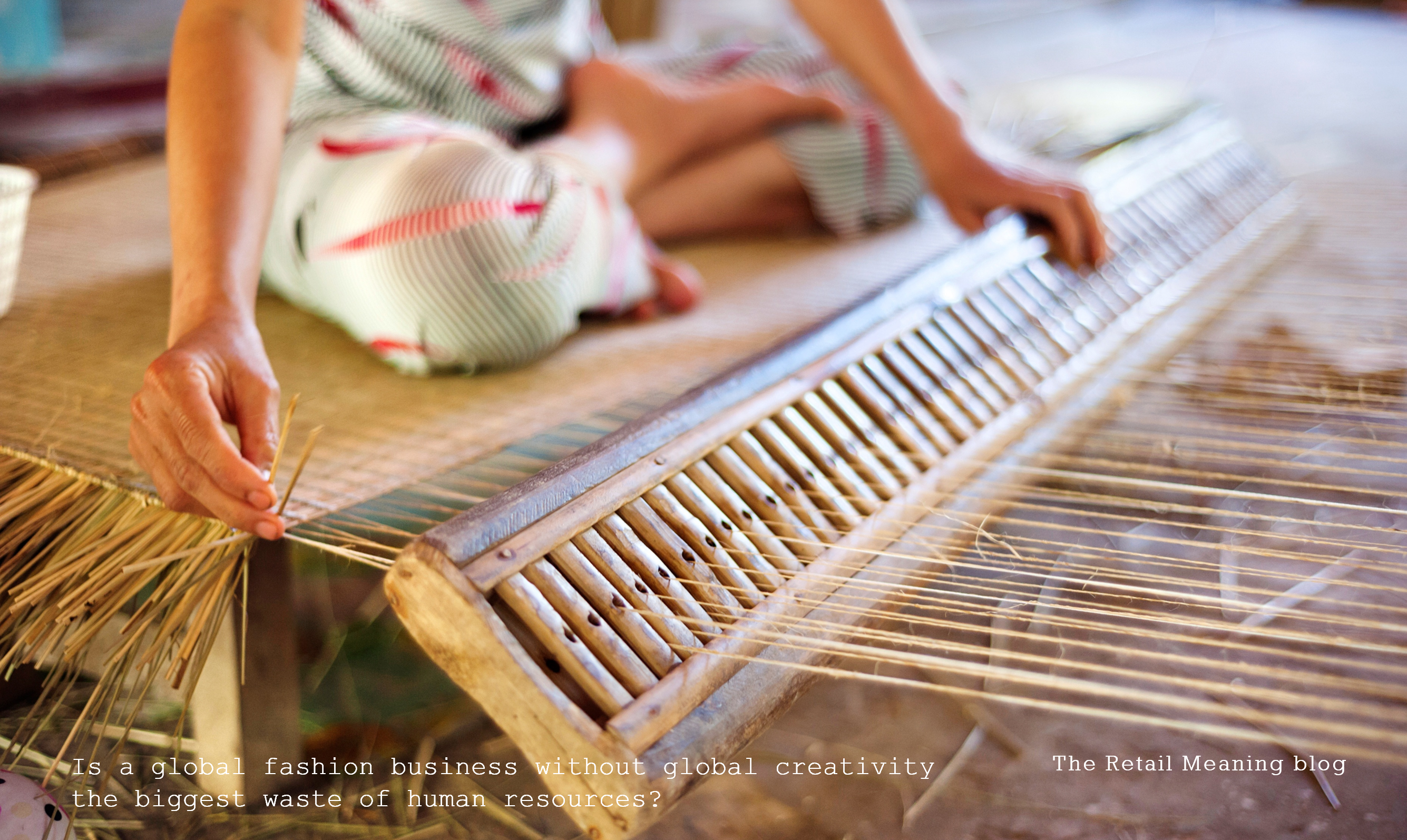I’ve always found it very strange that many of the factories that are required to churn out mindless, repetitive fashions for global brands, are in countries which naturally have the most beautiful fabrics, designs, colours, fashion sense, and artisan skills to create extraordinary and original clothing.
It is even stranger when you consider that the churn of fashion themes that emerge from the desks of buyers every season will regularly include the familiar Africa, Jungle, Sahara, Amazon and more latterly Manga and K-Fashion.
Sadly what is ‘designed’ and produced are often pale cliches and replications of previous waves of sad reproductions.
Certainly for many global businesses, overseas investment is usually restricted to factories and logistics to increase efficiencies and reduce costs. Places where commodity workforces produce commodity fashion.
The average buyer visit to sample and sign-off the new ‘Asian Chic’ collection involves all the cultural experiences of the inside of a plane, a taxi, a hotel, a factory office somewhere in Asia, a spreadsheet or two, then another taxi and plane home.
Such bitter irony. Such waste!
A waste of genuine inspiration to create original and unique designs, a waste of design skills, seamstress and fabric knowledge, that could add real value to garments whilst being intelligently economical.
What a wasted opportunity to add value to global partners, to add value to workers and craftspeople in the supply chain, and add value to garments through celebrating with customers the origins and inspiration behind what they buy and wear.
And what a wasted opportunity to redress the imbalance of wealth and influence between the lands of owners and buyers and the lands of growers and factory workers.
Why are we happy with this situation? Is there a need to educate ‘western’ consumers and change their mindsets and understanding of what adds genuine and lasting value to fashion garments.
Or is it ‘western’ fashion buyers in ‘western’ offices and cities that need to be enlightened and reminded of the value of inspiring product design rather than the values on yesterday’s spreadsheets.
Thankfully businesses are increasingly harnessing global design skills and creativity, shifting investment and collaborations in product design & buying to the source of inspiration.
They are educating the customer that the beauty of global design comes in the form of fabric selection, the cutting and shaping of silhouettes & patterns, and the modern interpretation of traditional patterns & textures; and not through the crude application of generic leaf prints, and bird of paradise motifs.
Appreciating the value of authentic design skills in the supply chain adds value to garments, creates brand differentiation, drives sales of added-value products for life and begins to geographically distribute more fairly the profits of a successful global fashion brand.
